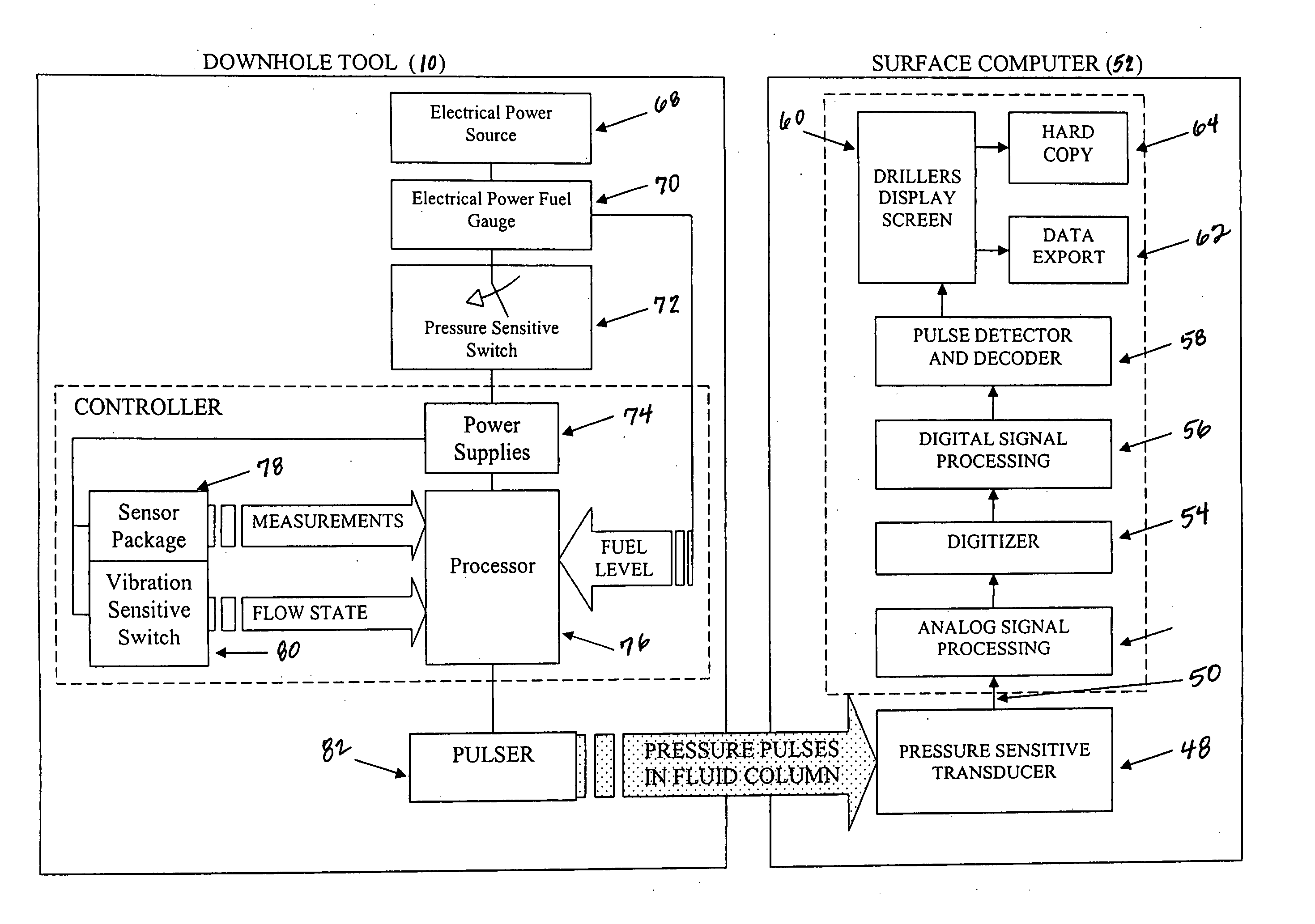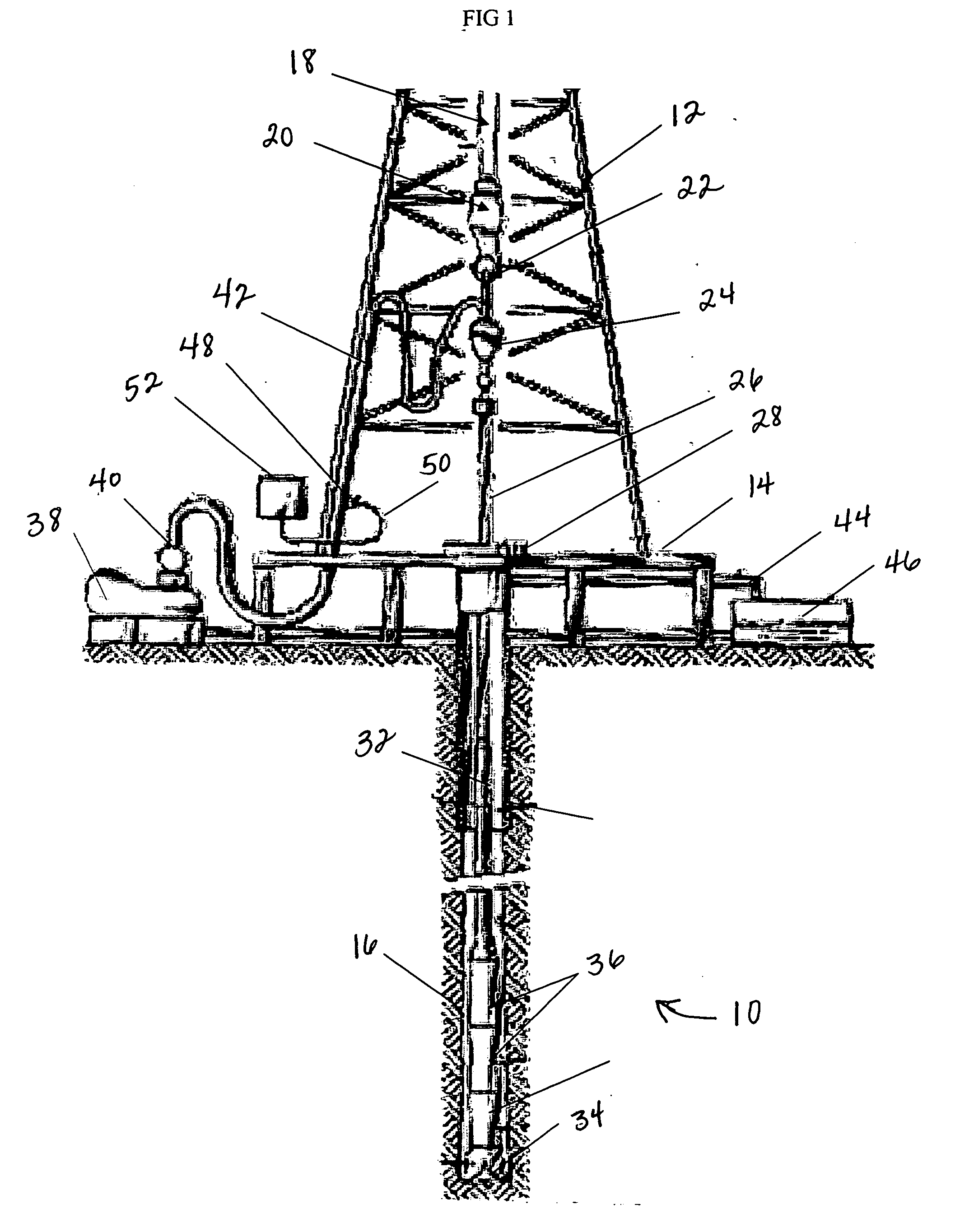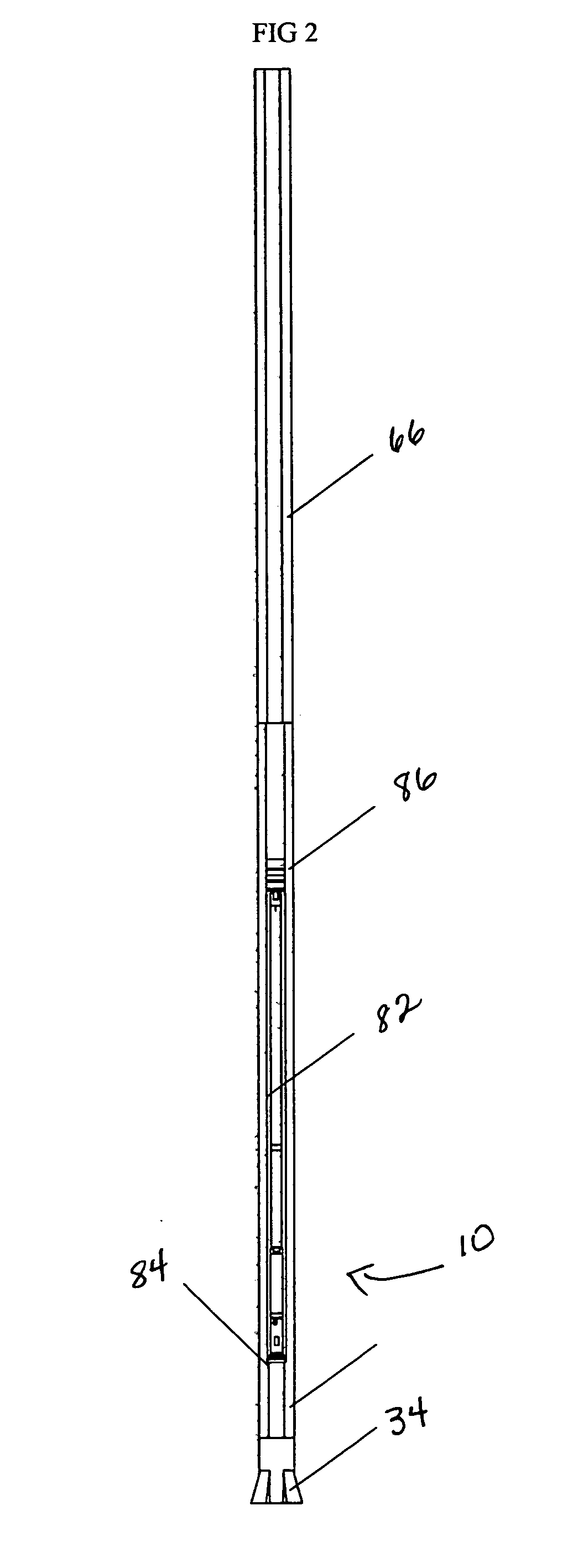Measurement while drilling apparatus and method of using the same
a technology of measuring apparatus and drilling shaft, which is applied in the direction of surveying, borehole/well accessories, constructions, etc., can solve the problems of affecting affecting the accuracy of drilling, so as to reduce erosion and wear, prolong the life of the battery, and save the power of the battery
- Summary
- Abstract
- Description
- Claims
- Application Information
AI Technical Summary
Benefits of technology
Problems solved by technology
Method used
Image
Examples
Embodiment Construction
[0100] In a preferred embodiment of the invention, as described in detail below, information of use to the driller is measured at the bottom of a bore hole relatively close to the drilling bit and this information is transmitted to the surface using pressure pulses in the fluid circulation loop. The command to initiate the transmission of data is sent by stopping fluid circulation and allowing the drill string to remain still for a minimum period of time. Upon detection of this command, the downhole tool measures at least one downhole condition, usually an analog signal, and this signal is processed by the downhole tool and readied for transmission to the surface. When the fluid circulation is restarted, the downhole tool waits a predetermined amount of time to allow the fluid flow to stabilize and then begins transmission of the information by repeatedly closing and then opening the pulser valve to generate pressure pulses in the fluid circulation loop. The sequence of pulses sent ...
PUM
 Login to View More
Login to View More Abstract
Description
Claims
Application Information
 Login to View More
Login to View More - R&D
- Intellectual Property
- Life Sciences
- Materials
- Tech Scout
- Unparalleled Data Quality
- Higher Quality Content
- 60% Fewer Hallucinations
Browse by: Latest US Patents, China's latest patents, Technical Efficacy Thesaurus, Application Domain, Technology Topic, Popular Technical Reports.
© 2025 PatSnap. All rights reserved.Legal|Privacy policy|Modern Slavery Act Transparency Statement|Sitemap|About US| Contact US: help@patsnap.com



